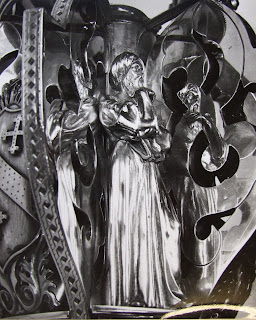Avicenna’s “Canon of Medicine”
 This post forms the first in a new series of monthly posts, contributed by the librarian Robert Mills, looking at key items within Dun's Library.
This post forms the first in a new series of monthly posts, contributed by the librarian Robert Mills, looking at key items within Dun's Library.
During Europe's "Dark Ages", following the collapse of the Roman Empire, the medical knowledge of the Romans and Greeks was largely kept alive in the Arabic world where it was translated and adapted to suit the religion, climate and race of the area. The rulers of Bagdad from AD 750 to 1258, in particular, helped to preserve the Greek and Roman works on medicine and other sciences.

Among the greatest of the Arab physicians was Ibn Sina, generally called Avicenna in Europe. He was born in Persia in AD 980 and had mastered medicine, philosophy, astronomy, poetry and other subjects before the age of 16 and was appointed chief physician to the celebrated hospital at Bagdad before he was 18.
He wrote over 400 treatises on a variety of subjects, the most famous of which was his Qanun, or Canon of Medicine. This is an encyclopaedia of Galenic medicine in five books and was completed in 1025. It presents a clear and organized summary of all the medical knowledge of the time. Originally written in Arabic, the book was later translated into a number of other languages, including Latin, Chinese, Hebrew, German, French and English. It became the standard textbook for medical education in the schools of Europe for over six centuries, being still used in the medical schools at Montpellier and Leuven as late as 1650.
 |
| Sir William Osler |
In the early 20th century, the great Canadian physician, Sir William Osler, described the Canon as "the most famous medical textbook ever written".
The Canon was first translated into Latin by Gerard of Cremona in the late 12th century. Within the collections in Dun's Library is a later edition of this translation, published in Basle in 1556. It is one of the oldest books in the entire Library, is listed in the earliest manuscript catalogue of the Library (1800) and may well have formed part of Dun's original bequest.
 |
| Images of physical therapy from Avicenna's Canon |
Avicenna is also honoured by the College with the inclusion of a small statuette of him as one of the three "fathers of medicine" (along with Hippocrates and William Harvey) on the College mace.
 |
| Avicenna on the College's mace |
The mace, commissioned by the College in the 1850s, was designed by the Irish artist
Sir Frederick William Burton, and made by the Dublin firm of Silversmiths West and Sons.
Robert Mills